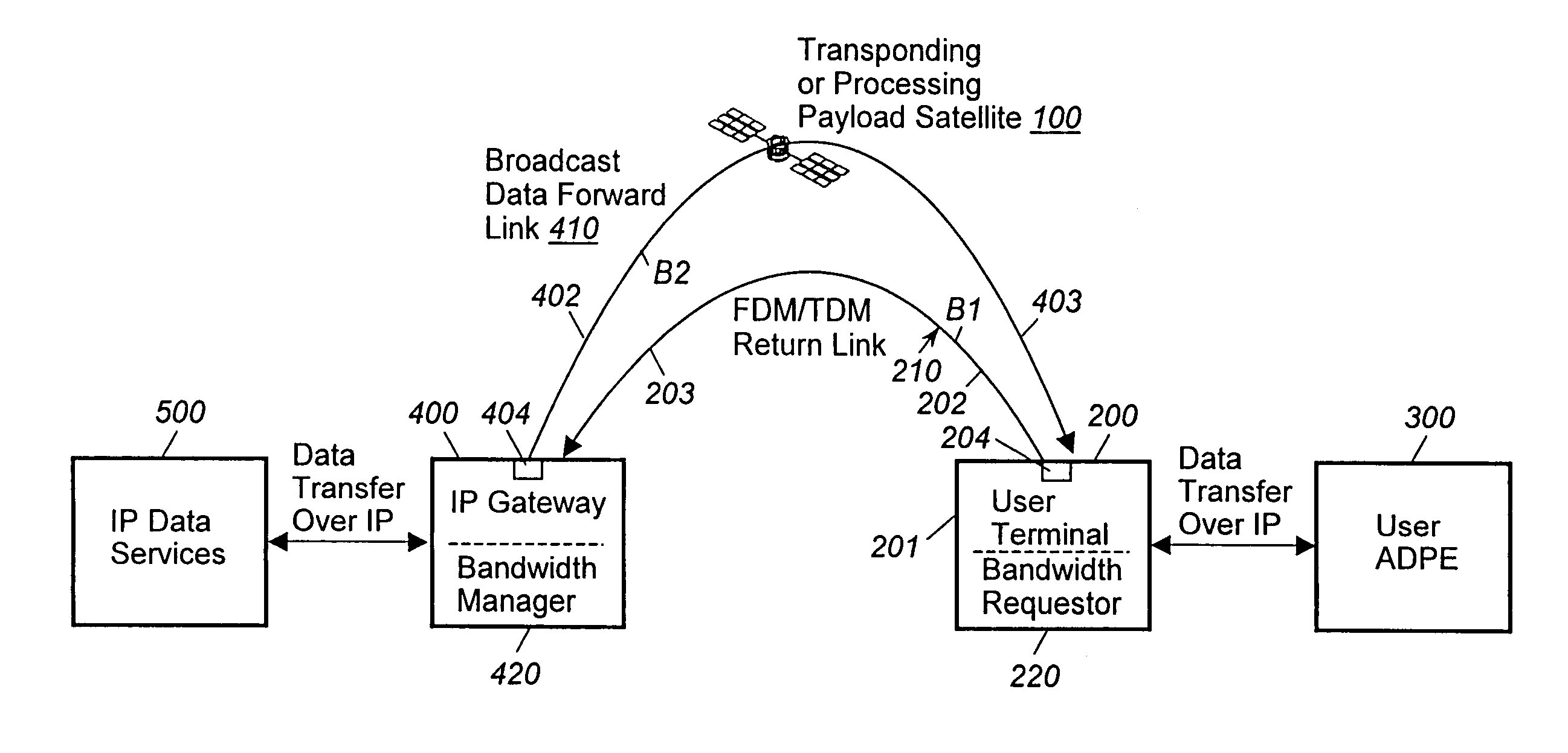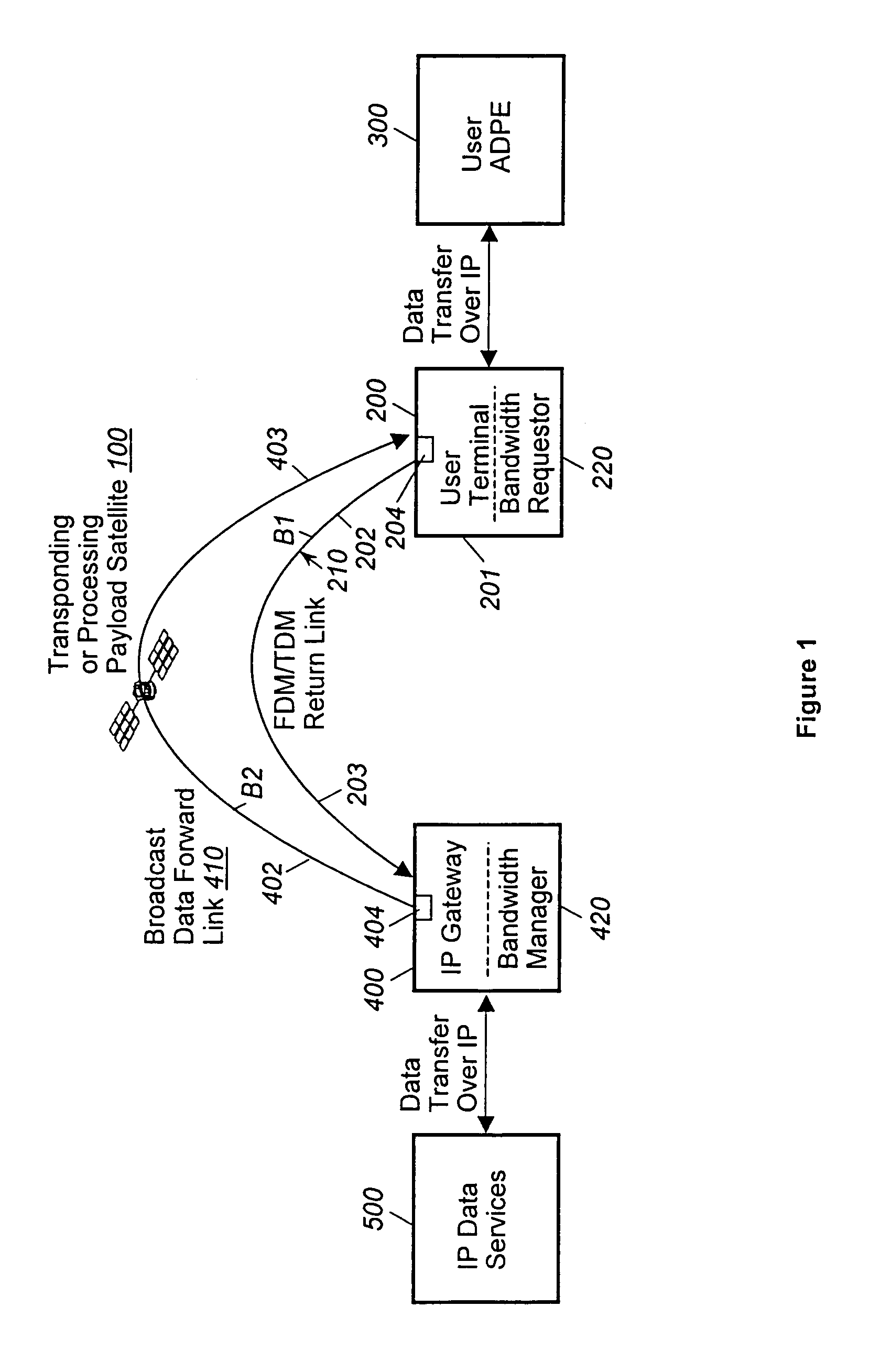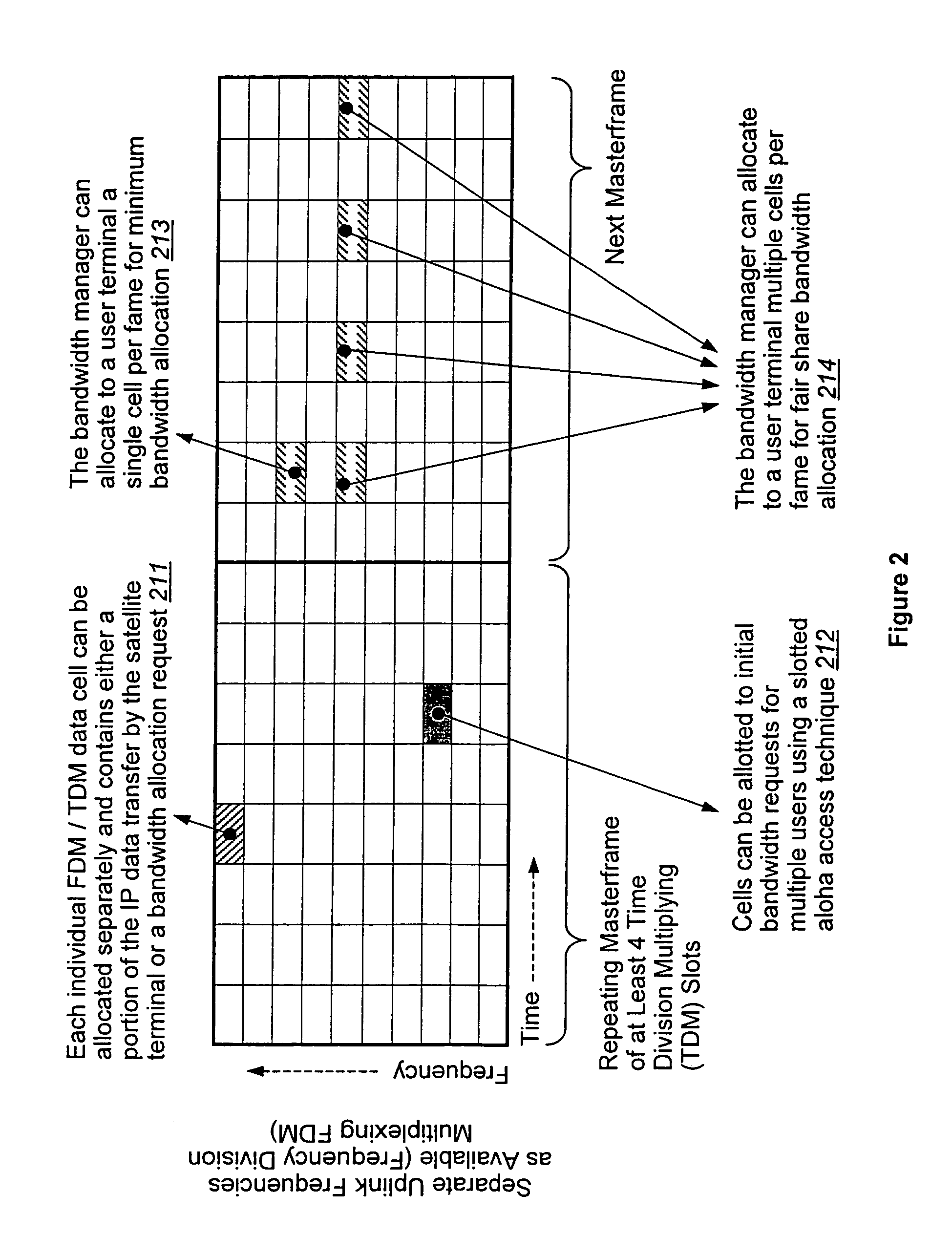Variable bandwidth satellite communication techniques
a satellite communication and variable bandwidth technology, applied in the field of satellite communication systems, can solve the problems of large propagation delay, one-way delay between users, large delay in communications between users, etc., and achieve the effect of increasing the available bandwidth, improving efficiency, and increasing the number of users
- Summary
- Abstract
- Description
- Claims
- Application Information
AI Technical Summary
Benefits of technology
Problems solved by technology
Method used
Image
Examples
Embodiment Construction
[0020]The preferred embodiments combine the following seven features to create a Variable Bandwidth Allocation (VBA) scheme that allows a central bandwidth allocation manager to maximize the utilization of a shared bandwidth resource without undo impact on the individual users performance. The VBA scheme can be tailored to the protocol and activity being supported by the satellite network to include less than the full set of features and still provide better link efficiency than currently available allocation protocols
[0021]1) Dedicated allocation for dedicated services: No remote allocation approach can provide the required QoS for VoIP or IP teleconferencing without a dedicated allocation. The VBA gives these applications a priority service. The VBA makes this allocation on the basis of the resource reservation protocol (RSVP) request for this type of service.
[0022]2) Low rate start up: Since most of the initial user traffic for interactive packet based communication is at a very ...
PUM
 Login to View More
Login to View More Abstract
Description
Claims
Application Information
 Login to View More
Login to View More - R&D
- Intellectual Property
- Life Sciences
- Materials
- Tech Scout
- Unparalleled Data Quality
- Higher Quality Content
- 60% Fewer Hallucinations
Browse by: Latest US Patents, China's latest patents, Technical Efficacy Thesaurus, Application Domain, Technology Topic, Popular Technical Reports.
© 2025 PatSnap. All rights reserved.Legal|Privacy policy|Modern Slavery Act Transparency Statement|Sitemap|About US| Contact US: help@patsnap.com



